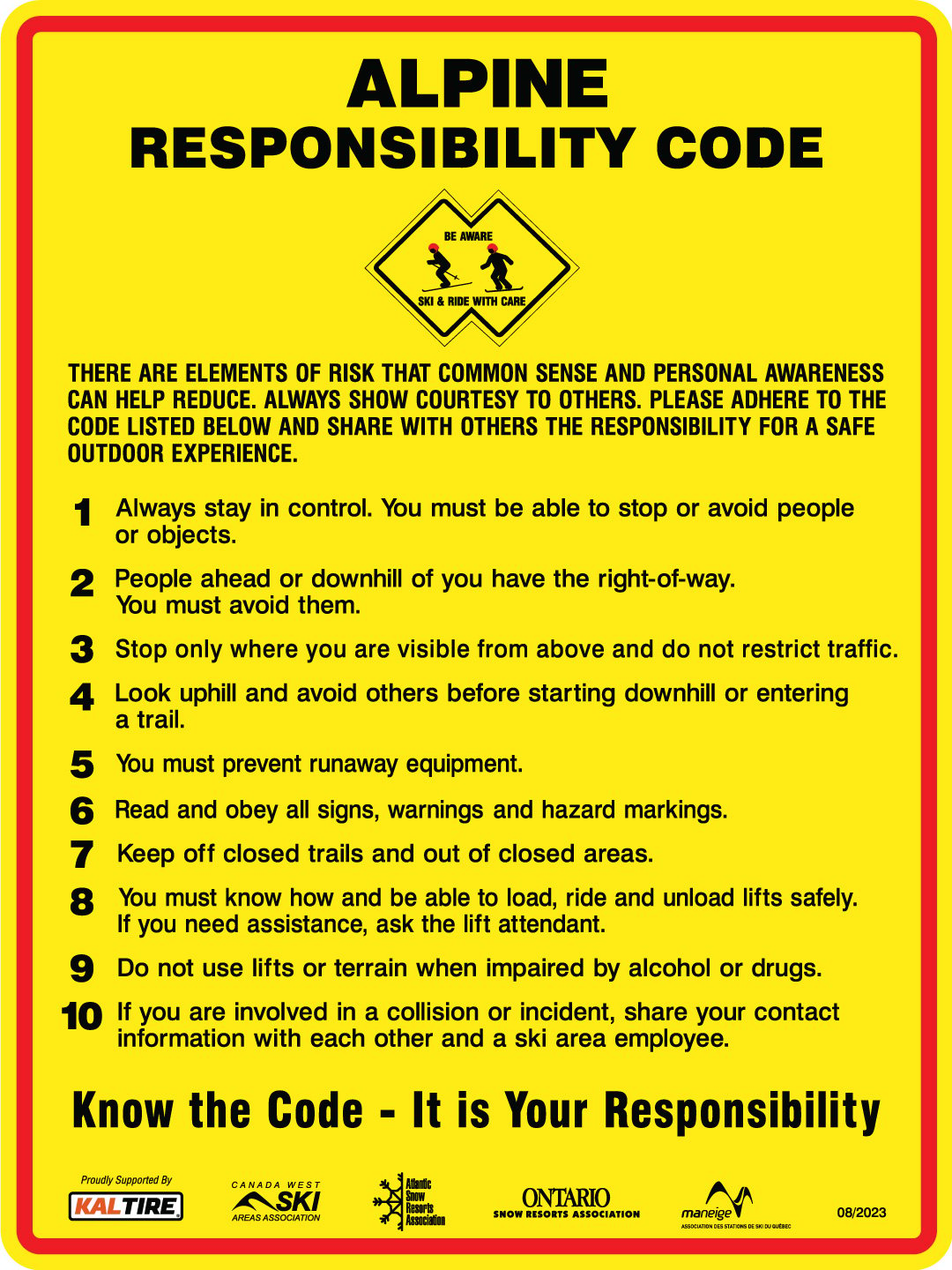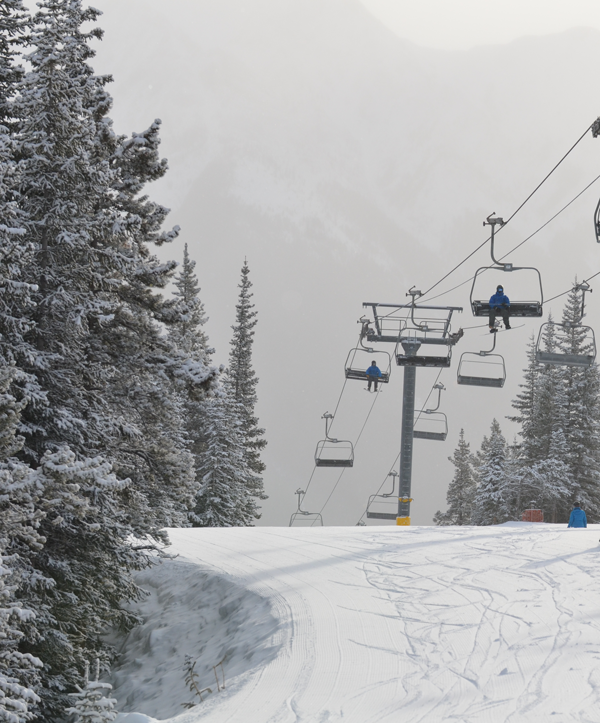Emergency Line
Snow Patrol
If you require assistance from ski patrol on the mountain, dial 1 (403) 591-7777 Ext. 7238
cm | cm |
cm | cm |
UPPER MOUNTAIN | |||
|
| ||
HIGH | LOW | ||
LOWER MOUNTAIN | |||
|
| ||
HIGH | LOW | ||
/ | 70 | |
GROOMED | ||
/ | 79 | |
OPEN | ||
| ||||
| GOLD CHAIR: | ||||
| SILVER CHAIR: | ||||
| BUY LIFT TICKETS | ||||
If you require assistance from ski patrol on the mountain, dial 1 (403) 591-7777 Ext. 7238


This sign identifies runs that have limited snow cover, but are still “skiable” with caution. May have exposed rocks, creeks, etc. Damage to your equipment is likely. Ski with care and prepare for the unexpected. If signs are out at the top or bottom of the lifts, this indicates that all or much of the area has unmarked hazards.
This sign is used for permanent or temporary closure of areas within the ski area. Avalanche Closures keep Employees and Guests out of harm’s way while active avalanche control is taking place or when the hazard is too high. Lift access privileges will be revoked for entering these areas when closed for control.
Runs may be closed for several reasons such as trees have fallen onto the run, ditches or holes have rendered the run unsafe, race or other events are taking place, or perhaps machinery is operating. Lift access privileges will be revoked for entering these areas when closed. Passes will be revoked for breach.